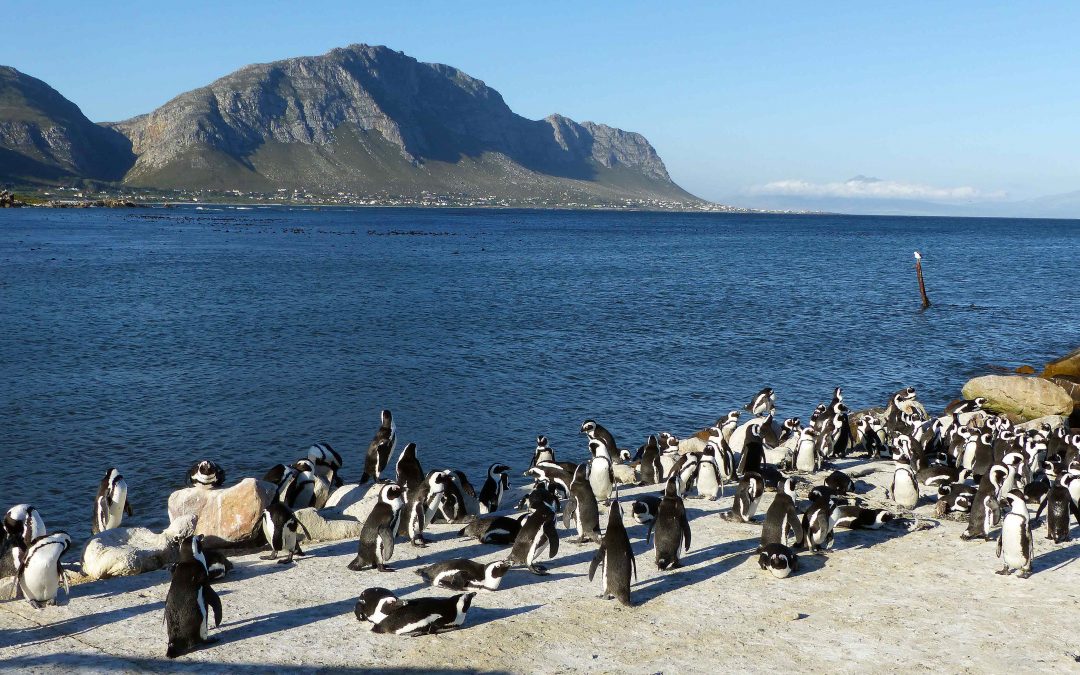
by Zoë Poulsen - Cape Town Botanist | Jan 27, 2018 | Botanic Gardens, Cape Floristic Region, Conservation, Ecology, Ecotourism, Forest, Fynbos, Orchids, Overberg, Plant Profiles, Responsible Tourism, Travel
It is that wonderful time again, when the intense red orchid Disa uniflora (Red Disa or Pride of Table Mountain) come into bloom. There is no South African flower that shouts ‘summer’ to me more than this. They grow on stream banks, next to waterfalls and on wet shady precipitous cliffs from the Cape Peninsula eastwards to Bredasdorp in the Overberg and northwards to the Cederberg. The genus is named after Queen Disa, a character from Swedish mythology who according to legend presented herself to the King of Sveas wearing only a fishing net.
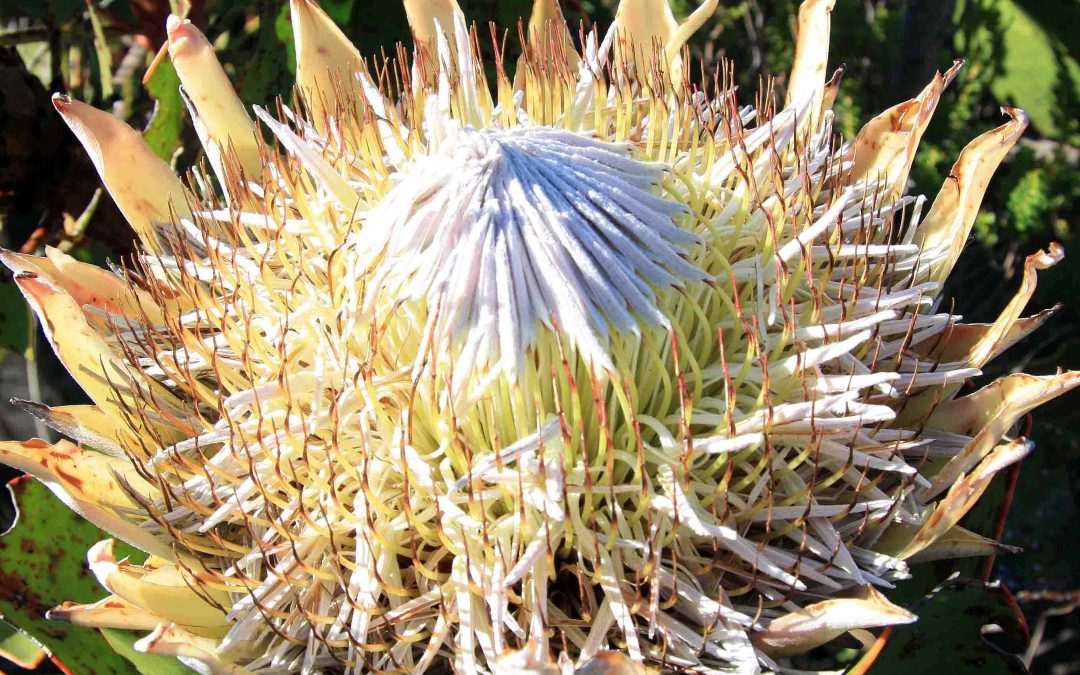
by Zoë Poulsen - Cape Town Botanist | Jan 10, 2018 | Botanic Gardens, Cape Flats Sand Fynbos, Cape Floristic Region, Cape Peninsula, Cederberg, Conservation, Ecology, Endangered Species, Ethnobotany, Fynbos, Hiking, Landscape History, Mountains, Plant Profiles, Pollination, Proteaceae, Proteas, Renosterveld
The genus Protea is one of the most well-known and charismatic of the Cape Floristic Region’s (CFR) Fynbos Biome. The King Protea (Protea cynaroides) is South Africa’s national flower. Proteas are exported as cut flowers all over the world, prized for their beauty, diversity and longevity. They are often depicted in artwork and are popular garden plants. Members of the genus are also known as sugarbushes.
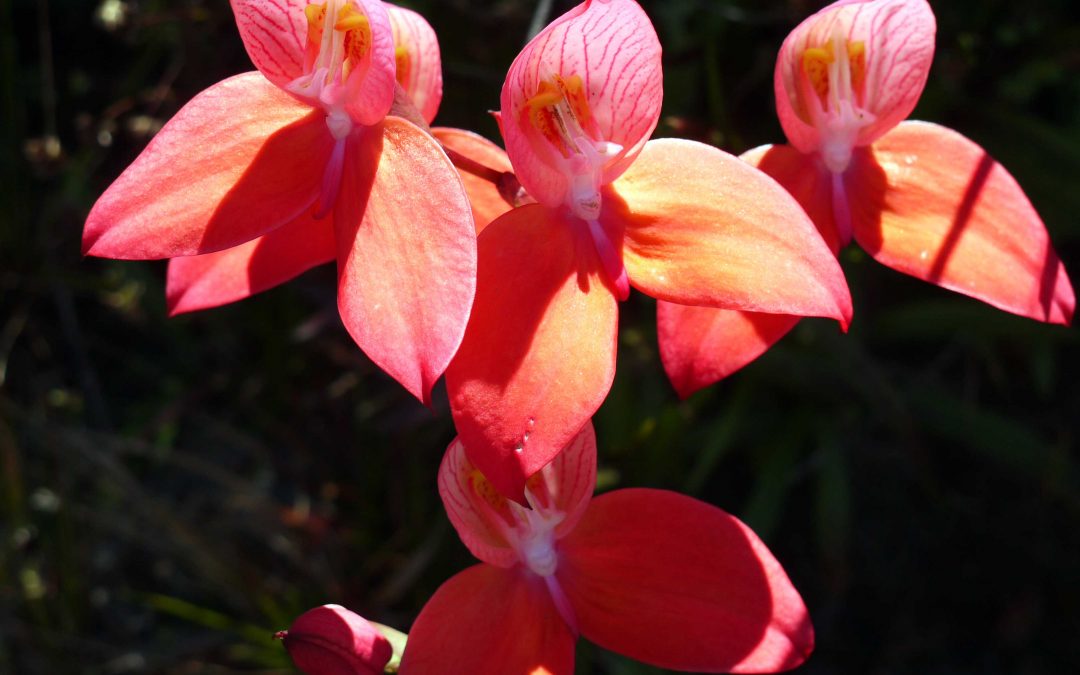
by Zoë Poulsen - Cape Town Botanist | Feb 5, 2017 | Cape Floristic Region, Cape Peninsula, Conservation, Ecology, Fynbos, Hiking, Landscape History, Mountains, Orchids, Plant Profiles, Table Mountain
I grew up a winter baby, born in February in the northern hemisphere. Childhood birthdays were days for hot chocolate, tobogganing in the snow and soggy visits to the zoo watched by various bemused creatures hiding from the horizontal Westcountry rain. Six years ago I moved to Cape Town and suddenly the seasons were ‘back to front’ and my birthday moved to mid-summer and the hottest time of the year. It also now coincides with the flowering of one of the Cape Floristic Region’s most spectacular orchids – The Pride of Table Mountain or Red Disa (Disa uniflora).
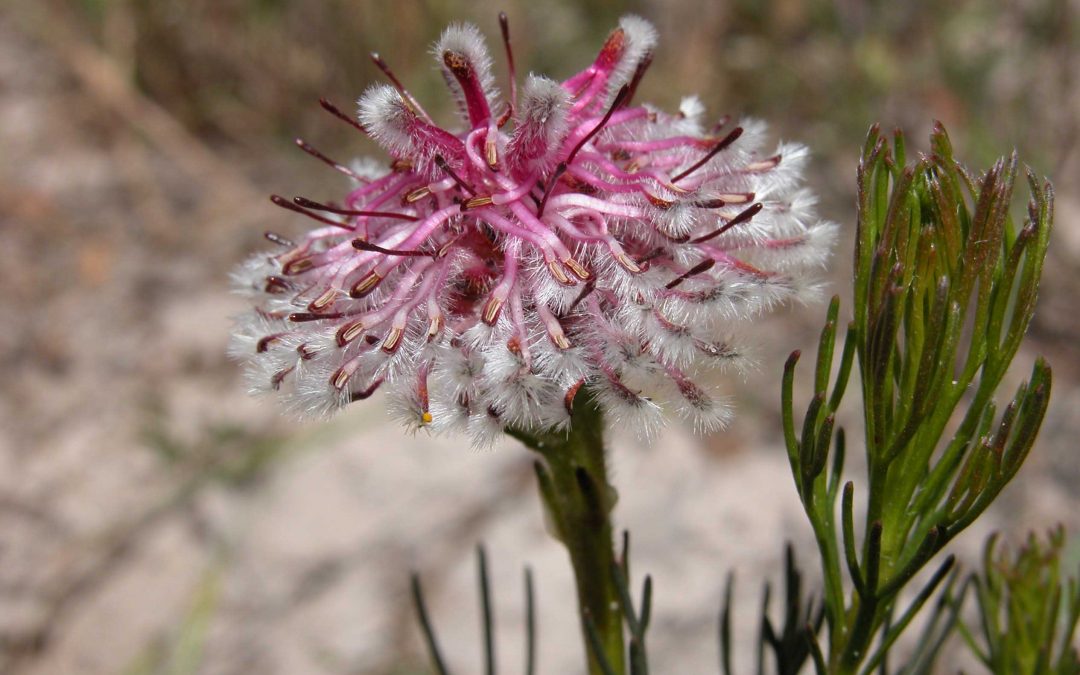
by Zoë Poulsen - Cape Town Botanist | Nov 5, 2016 | Botanic Gardens, Cape Flats Sand Fynbos, Cape Floristic Region, Cape Peninsula, Conservation, Ecology, Endangered Species, Fynbos, Kirstenbosch, Plant Profiles
Have you ever wondered what it would be like to be the last in the world of your kind? There are many species who have experienced this fate in the hands of people. The most famous of these is Lonesome George, a giant tortoise of the Pinta subspecies from the Galapagos Islands. Despite the best efforts of conservationists, when Lonesome George died in 2012 at the age of approximately 102, the Pinta Island subspecies of giant tortoise died with him. I was lucky enough to meet Lonesome George at his last home at the Charles Darwin Research Centre during a stint of volunteering in the Galapagos Islands during my teens, and it is a memory that has stayed with me.
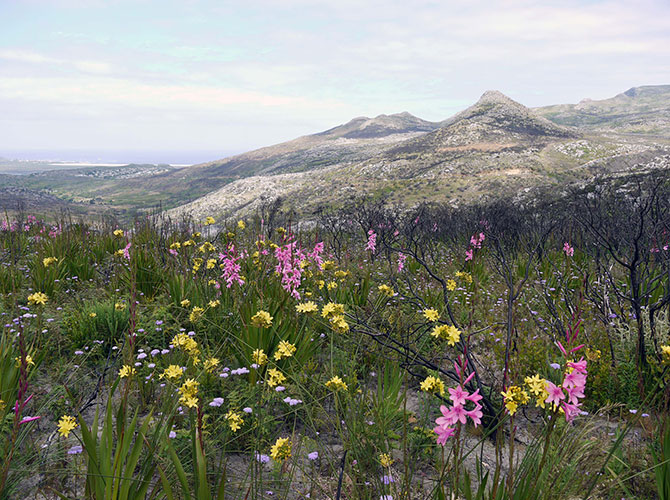
by Zoë Poulsen - Cape Town Botanist | Apr 14, 2016 | Cape Floristic Region, Cape Peninsula, Conservation, Ecology, Fire, Fynbos, Geophytes, Hiking, Mountains, Orchids, Plant Profiles, Research, Table Mountain
In March 2015 the Peninsula burnt. The biggest veld fire since 2000 raged across Table Mountain National Park. People lost homes and businesses. Bees Marais, one of the country’s top helicopter rescue pilots, tragically lost his life in the line of duty while fighting fire at Cape Point. The blaze and the acrid smoke cloyed the air all over Cape Town, turning the sky scarlet and orange as the sun went down each day.
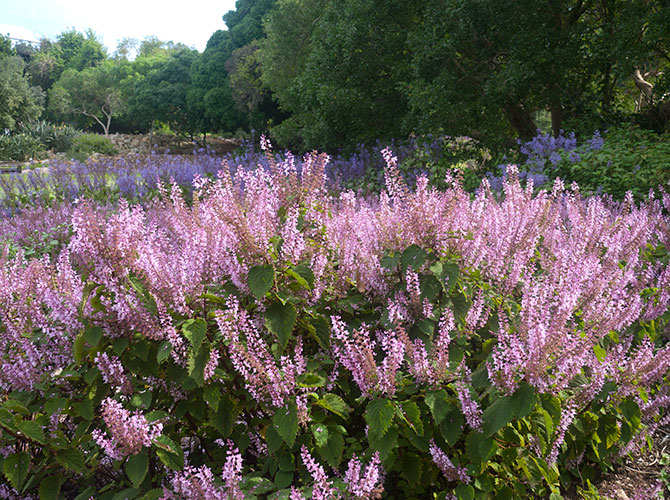
by Zoë Poulsen - Cape Town Botanist | Apr 28, 2014 | Ecology, Ethnobotany, Forest, Kirstenbosch, Plant Profiles
One of the highlights of any visit to Cape Town’s Kirstenbosch National Botanic Gardens in April are the carpets of Plectranthus flowers occupying every available shady corner at this time of year. Colours vary from white to pale pink to the deepest dark blues and purples with species of every height, form and variety being cultivated under the shadow of Table Mountain’s eastern buttresses and crags.






